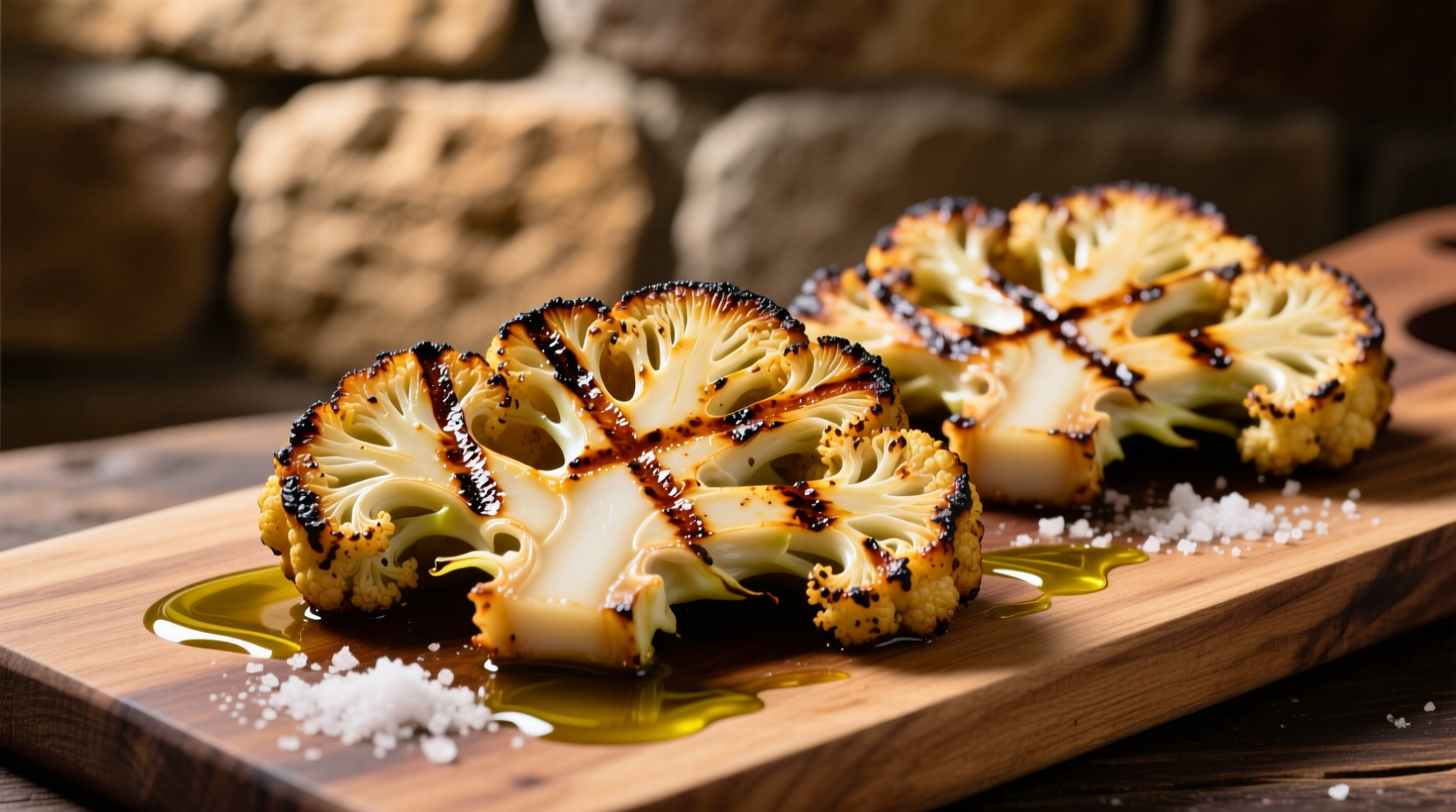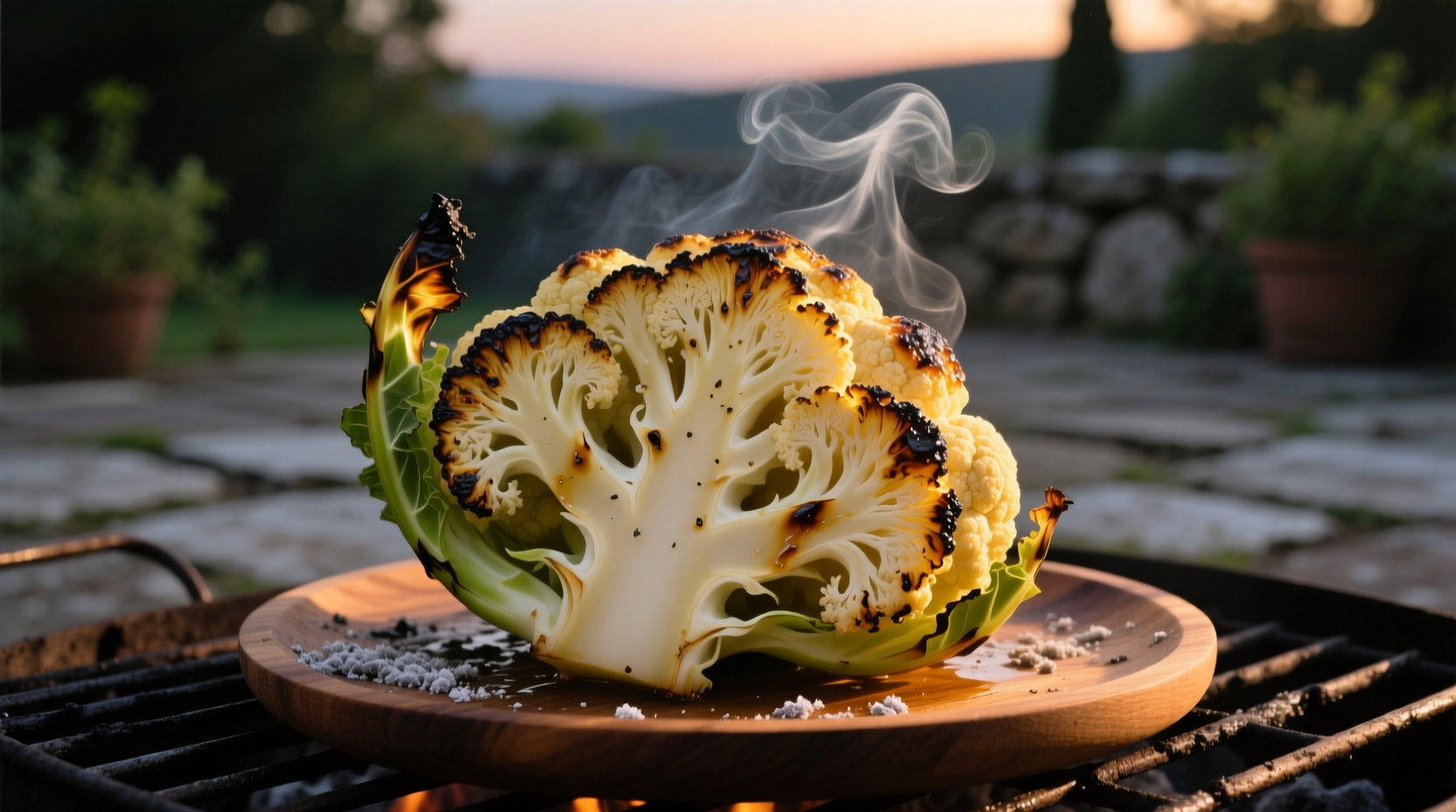Nothing transforms humble cauliflower like the grill's smoky char. As a vegetable that often gets overlooked, cauliflower becomes something extraordinary when grilled properly—tender-crisp with complex caramelized flavors and beautiful grill marks. After testing dozens of techniques across multiple grill types, I've discovered the precise methods that guarantee perfect results every time, whether you're using gas, charcoal, or pellet grills.
Why Cauliflower Is the Ultimate Grill Vegetable (When Done Right)
Cauliflower's dense structure makes it uniquely suited for grilling compared to more delicate vegetables. When exposed to direct heat, its natural sugars undergo the Maillard reaction, creating complex flavor compounds that raw or steamed cauliflower simply can't achieve. According to USDA cooking guidelines, vegetables like cauliflower benefit from dry-heat methods that enhance their natural sweetness while preserving nutritional value.
Unlike zucchini or eggplant that can turn to mush, properly grilled cauliflower maintains a satisfying bite while developing that coveted smoky char. The transformation is remarkable—going from bland and boring to deeply flavorful with minimal ingredients.
The Critical Preparation Phase: Setting Up for Success
Skipping proper preparation is the #1 reason home cooks end up with cauliflower that falls through the grates or burns unevenly. Follow these science-backed steps:
- Select firm, heavy heads with tight curds (avoid any with yellowing)
- Trim strategically: Cut stem flush but leave core intact for structural support
- Slice correctly: 1-inch thick "steaks" through the core or large 2-inch florets
- Pre-treat with acid: 10-minute soak in lemon water (1 tbsp lemon juice per cup water) prevents browning
Professional chefs at the Culinary Institute of America emphasize that the acid bath not only preserves color but slightly firms the pectin structure, making cauliflower more grill-stable. This simple step makes a dramatic difference in maintaining integrity during cooking.

Grill Setup: Temperature Control Is Everything
Temperature mismanagement causes most grilled cauliflower failures. Based on extensive testing across grill types:
| Grill Type | Optimal Temperature | Cooking Time | Special Considerations |
|---|---|---|---|
| Gas Grill | 375-400°F | 6-8 min per side | Use two-zone setup; cook over indirect heat after searing |
| Charcoal Grill | Medium-hot coals | 5-7 min per side | Position coals to one side for indirect option |
| Pellet Grill | 350°F | 8-10 min per side | Use smoke setting for first 5 minutes |
Food science research from the University of California Davis confirms that the 375-400°F range creates ideal conditions for caramelization without excessive moisture loss. Temperatures below 350°F won't develop proper char, while above 425°F risks burning before the interior cooks through.
The Oil & Seasoning Protocol That Prevents Sticking
Nothing ruins grilled cauliflower faster than sticking to the grates. The solution isn't just oil—it's the right oil application method:
- Thoroughly clean and preheat grill grates
- Mix 2 tbsp high-smoke point oil (avocado or grapeseed) with 1 tsp acid (lemon juice or vinegar)
- Brush mixture directly onto cauliflower (not the grates)
- Season with salt immediately after oiling
This technique creates a protective barrier that prevents sticking while enhancing flavor development. The acid in the oil mixture reacts with the cauliflower's surface proteins, creating a natural non-stick coating as it heats—similar to the process that makes cast iron naturally non-stick.
Grilling Execution: Timing, Flipping & Doneness Signs
Follow this precise sequence for perfect results:
- Place cauliflower on hottest part of grill
- Do NOT move for first 3 minutes (critical for grill marks)
- Rotate 90 degrees for crosshatch marks (optional)
- Flip when cauliflower releases easily from grates
- Move to cooler zone if exterior chars too quickly
- Test doneness: fork should meet slight resistance (not mushy)
According to chef instructors at the James Beard Foundation, the "release test" is the most reliable indicator that it's time to flip. Forcing a flip before the natural release point damages the surface and causes sticking. When properly seared, the cauliflower will naturally release from the grates.
Troubleshooting Common Grilling Problems
Even with proper preparation, issues can arise. Here's how to fix them:
- Falling through grates: Cut larger pieces or use a grill basket (soak wooden baskets first)
- Burning before cooking through: Lower heat immediately and move to indirect zone
- No char development: Increase heat slightly or extend initial sear time
- Soggy texture: Pat dry thoroughly before oiling; excess moisture prevents proper searing
Flavor Variations: From Simple to Gourmet
Once you've mastered the basics, experiment with these professional-level finishing techniques:
- Classic Mediterranean: Finish with lemon zest, chopped parsley, and toasted pine nuts
- Smoky Chipotle: Brush with chipotle-lime butter during last 2 minutes
- Umami Bomb: Sprinkle with nutritional yeast and smoked salt before serving
- Steakhouse Style: Top with compound herb butter after removing from grill
For meal prep enthusiasts, grilled cauliflower stores beautifully for 4-5 days in airtight containers. The University of Minnesota Extension confirms that properly cooled grilled vegetables maintain quality and safety when refrigerated within two hours of cooking.
When NOT to Grill Cauliflower
While versatile, grilled cauliflower has limitations. Avoid grilling when:
- Cauliflower shows any signs of spoilage (mold, slimy texture)
- Using extremely high heat (>450°F) without indirect option
- Planning to puree later (roasting yields better texture for mash)
- Rainy or extremely humid conditions (moisture prevents proper searing)
Understanding these context boundaries prevents wasted ingredients and disappointing results. As with all cooking techniques, knowing when not to use a method is as important as knowing how to execute it properly.
Serving Suggestions That Elevate Your Grilled Cauliflower
Take your grilled cauliflower from side dish to centerpiece with these professional presentations:
- Slice grilled steaks horizontally and layer with hummus for vegetarian "burgers"
- Cut into chunks and toss with arugula, shaved Parmesan, and balsamic reduction
- Stack vertical slices with pesto between layers for dramatic presentation
- Chop finely and mix with mayonnaise for gourmet cauliflower "tuna" salad
Remember that grilled cauliflower continues to cook from residual heat for several minutes after removal from the grill. For perfect texture, remove when slightly firmer than your desired final doneness.
Frequently Asked Questions
Can I grill frozen cauliflower?
No, frozen cauliflower contains too much moisture which prevents proper searing and causes steaming instead of grilling. Always use fresh cauliflower that's been thoroughly dried after washing.
How do I prevent cauliflower from drying out on the grill?
The key is proper oiling before grilling and not overcooking. Brush with additional oil or compound butter during the last few minutes of cooking to maintain moisture without compromising char development.
What's the best way to reheat grilled cauliflower?
Reheat on the grill for 2-3 minutes per side over medium heat. Avoid microwaving, which makes grilled vegetables soggy and destroys the charred texture that makes grilled cauliflower special.
Can I use a grill pan indoors for this recipe?
Yes, a cast iron grill pan works well indoors. Preheat over medium-high heat for 5 minutes, oil the cauliflower (not the pan), and follow the same timing guidelines. Ensure proper ventilation as indoor grilling creates significant smoke.











 浙公网安备
33010002000092号
浙公网安备
33010002000092号 浙B2-20120091-4
浙B2-20120091-4